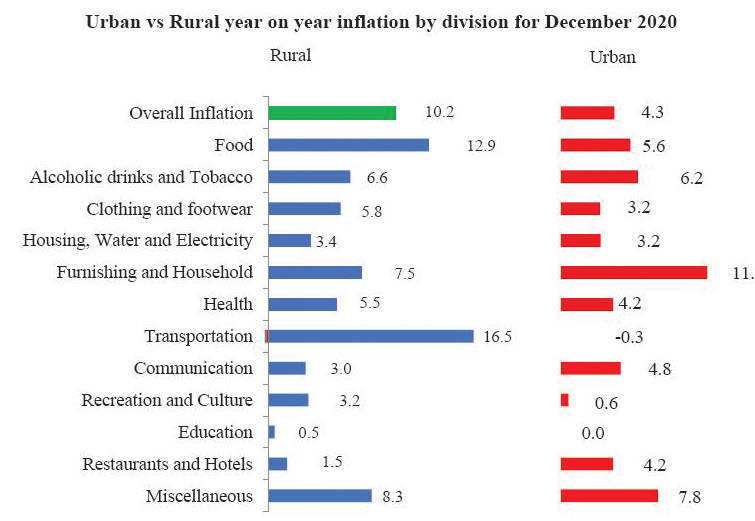Malawi reviews inflation formula
The National Statistical Office (NSO) has revised the country’s Consumer Price Index (CPI) basket used in computing inflation as food will now consume over half of household consumption patterns.
Following the revision, food contribution to the CPI has jumped to 53.7 percent from 45.2 percent.

NSO statistician in the price and index numbers Samuel Chipokosa said in an interview on Thursday the new CPI weights have been based on expenditures of households derived from the Fifth Integrated Household Survey (IHS5) conducted between 2019 and 2020.
He said: “The new CPI weights last revised in December 2017 depict more recent household expenditure patterns than the previous CPI weights.
“CPI weights are based on monetary expenditures relating to consumption for all households across the country.”
Chipokosa said the implication of the increase in the weight of the food division is more volatile in the inflation rates owing to the fact that Malawi CPI is mainly driven by food prices.
CPI rebasing, the changing of the weight reference period, price reference period or index reference period, is conducted periodically to reflect changes in household consumption patterns.
Economists say it is internationally recommended to rebase the CPI weights every five years.
CPI weights are based on monetary expenditures relating to consumption for all households across the country, according to NSO.
Following the rebase, the contribution of food, alcoholic drinks and tobacco, communication and education has been revised upwards to 53.7 percent, 2.7 percent, 4.1 percent and 3.1 percent from 45.2 percent, 2.5 percent, 3.7 percent and 2.1 percent in that order.
On the other hand, the contribution of clothing and footwear, furnishing and household, health, transportation and miscellaneous has been revised downwards to 1.1 percent, 2.2 percent, 2.2 percent, 4.1 percent and 0.3 percent from 2.9 percent, 4.6 percent, 2.9 percent, 8.4 percent and 1.6 percent respectively.
The contribution of housing, water and electricity is at 23.7 percent while that of restaurants and hotels is at two percent, the figures show.
In an interview on Friday, Economics Association of Malawi executive director Frank Chikuta said the composition of the CPI basket is determined through a survey of the expenditure patterns of the people in the economy, as such, the change is a reflection of a shift in the expenditure pattern.
“The increase in the contribution of food to the CPI basket means that people are now spending more on food compared to non-food items,” he said.
Consumers Association of Malawi executive director John Kapito said while this is a true reflection of what is happening on the ground, the contribution of transportation and health to the CPI could be higher than presented.
“While the CPI basket is loaded with food, there are serious movements triggered by fuel and other transport accessories that are not making sense,” he said.
Catholic University economics lecturer Hopkins Kawaye said the actual value of inflation is going to be hidden as there have been recent hikes in fuel, which will push up prices of other commodities.
“This will continue to misrepresent the situation on the ground,” he said.
The CPI is the barometer of the performance of the economy and a key indicator in evaluating the results of the monetary and fiscal policy in a country.






2 Comments